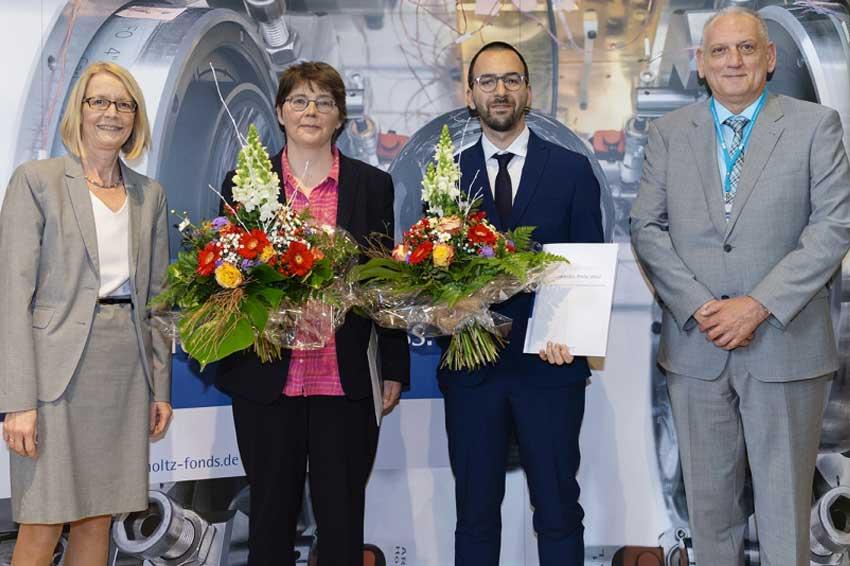Helmholtz Prize for two world-class optics research teams
Europe’s most important award for precision measurement is going to researchers in Düsseldorf and Garching
The Helmholtz Prize is the most important award in the realm of metrology, the science of measurement. In the category of fundamental research, the prize goes to Soroosh Alighanbari and his colleagues in Prof Schiller’s research group at the Heinrich Heine University Düsseldorf for the development of a new method of precision spectroscopy for exploring fundamental questions of physics. The Helmholtz Prize in the category of applied metrology has been won by Nathalie Picqué and Edoardo Vicentini of the Max Planck Institute of Quantum Optics in Garching. Their work has significantly expanded the possibilities of digital holography through the use of frequency combs. The awards ceremony for both prizes, each endowed with 20,000 euros, was held on 12 May 2022 during the international conference on “High-Precision Measurements and Searches for New Physics”. This conference was organized as a Wilhelm and Else Heraeus Seminar and will take place at the Physikzentrum in Bad Honnef, Germany.
Physicists seek answers to a number of fundamental questions: Are natural constants really constant? Is nature governed by four and only four forces? What is dark matter? Researchers hope to find the answers by studying simple quantum systems very meticulously. In recent years, a new family of such quantum systems has attracted particular attention: molecular hydrogen ions, the simplest of all molecules. One member of this family is the molecular ion HD+, which consists of one proton and one deuteron bonded by a single electron. As such, this is a very simple molecule that can on the one hand be used as a model system for more complex molecules and on the other serve as a convenient system for conducting fundamental research into the properties and interactions of the electron, the proton and the deuteron. Using this molecule, the Helmholtz Prize winners at the Heinrich Heine University Düsseldorf have developed and tested an innovative high-precision spectroscopy technique that can now be applied to other molecular ions. They further succeeded in enhancing the precision of some aspects of fundamental physics.
With its new imaging technique known as hyperspectral digital holography, the group at the Max Planck Institute of Quantum Optics (MPQ) headed by Nathalie Picqué have coupled holography with frequency comb technology. This enables even better 3D imagery with previously unimagined properties and opens up new avenues in optical diagnostics. The basic principle of using two frequency combs remains unchanged, but for holographic applications a camera is employed instead of a photodetector. The camera registers a spatial interference pattern that changes over time since the two lasers emit their pulses at different intervals. A computer calculates the radio frequency spectrum of the interference signal for each pixel. These spectra are then combined in a stack of digital holograms.
Dual-comb interferometers produce breathtaking results in spectroscopy and in ranging applications. The unique combination of broad spectral bandwidth, long temporal coherence and multiheterodyne readout offers powerful new features for holography. The technique developed by Vicentini and Picqué is likely to conquer new frontiers in scan-free wavefront reconstruction and three-dimensional metrology. Beyond that, it may have potential applications in microscopy for biological samples.
Contact
Physikalisch-Technische Bundesanstalt (PTB)
Bundesallee 100
38116 Braunschweig
Germany
+49 531 592-0







